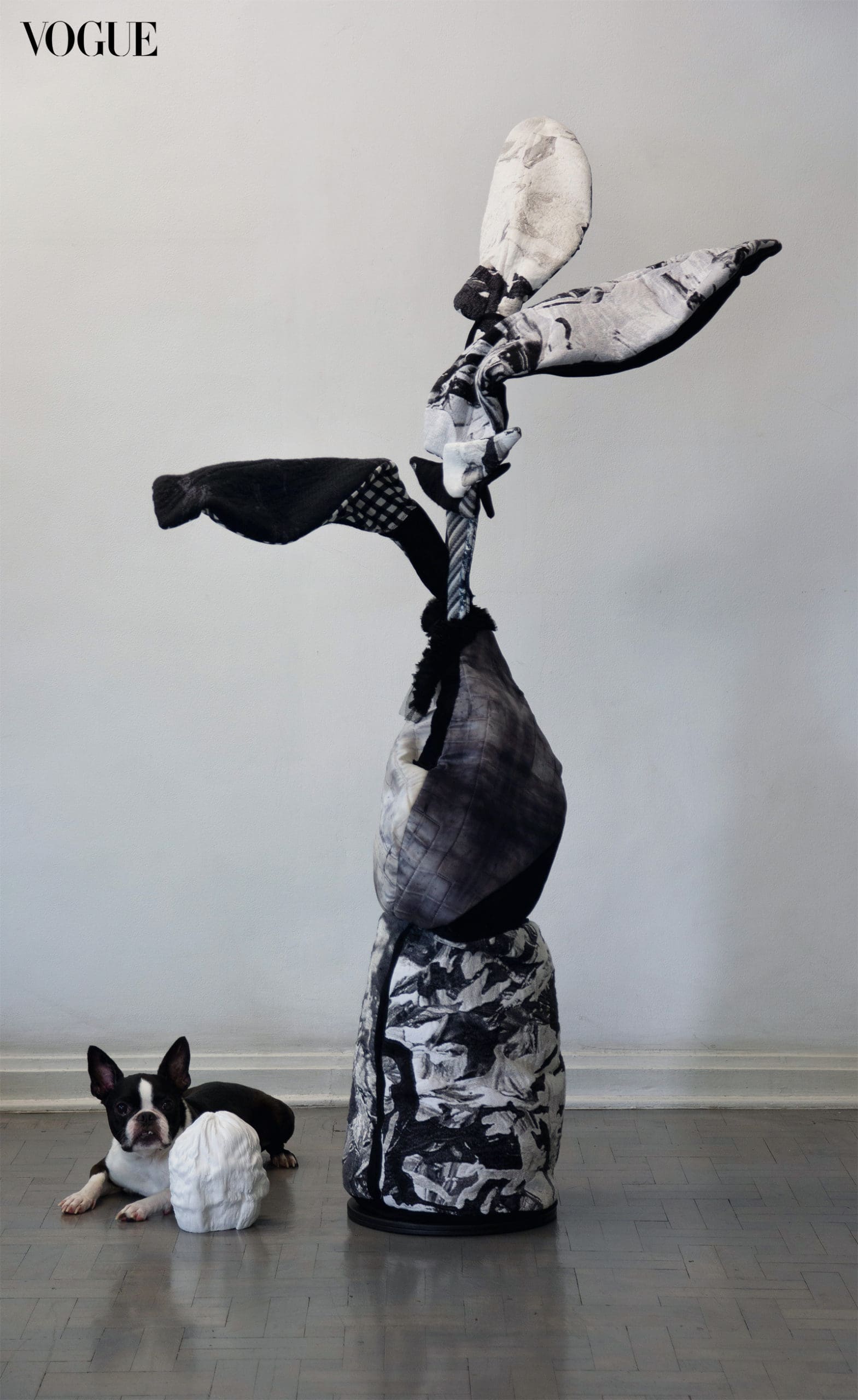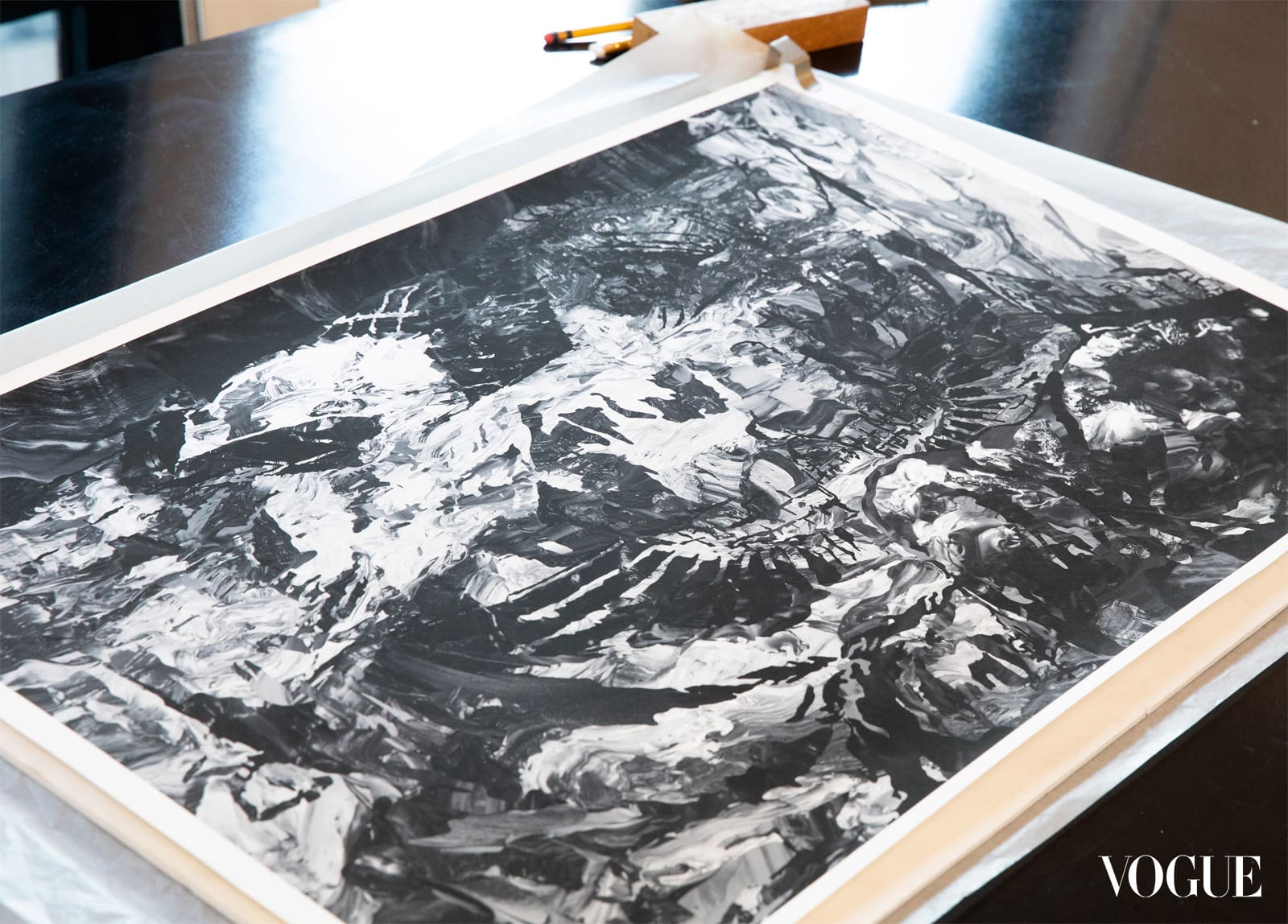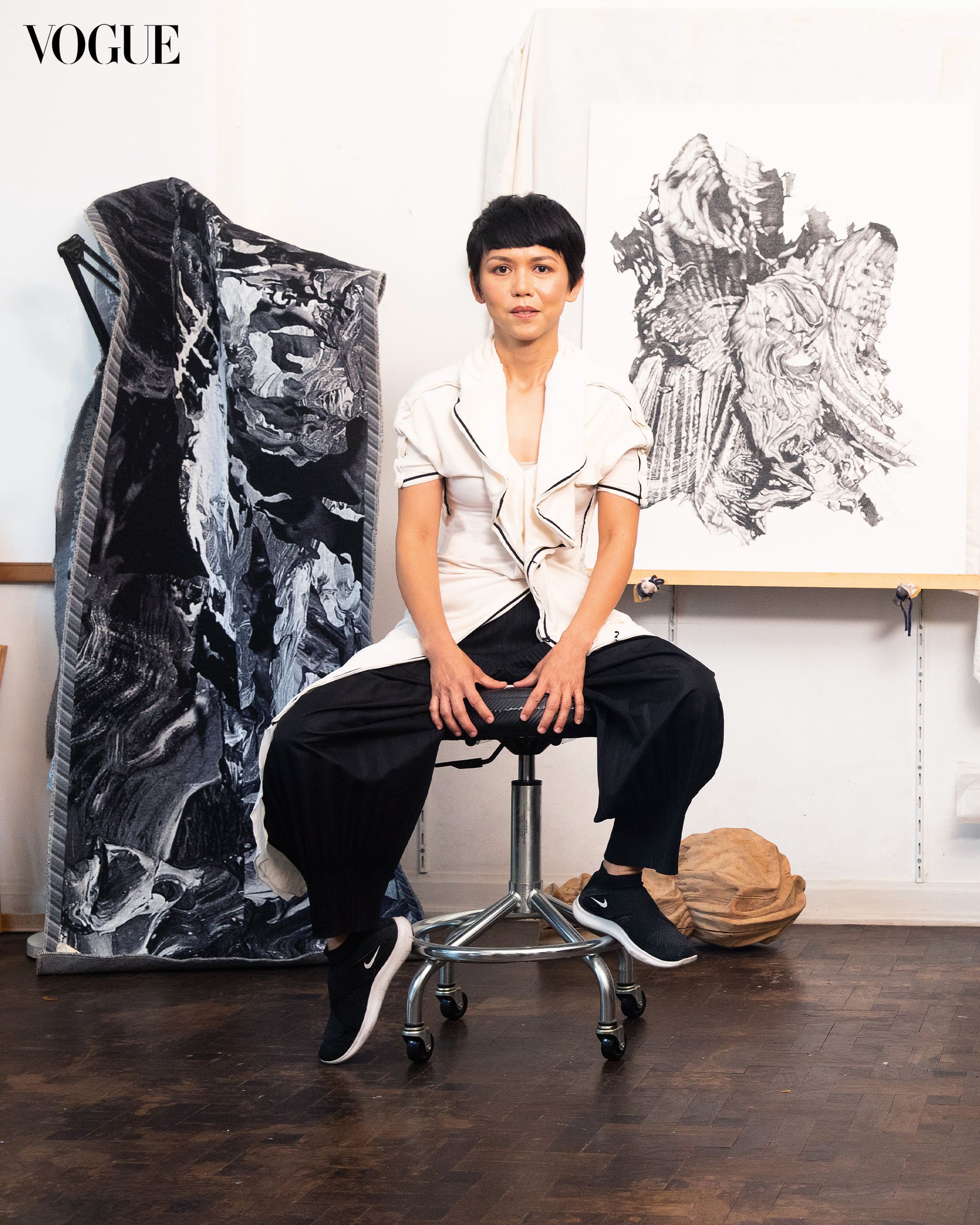Patricia in her Makati studio, wearing a top of her own design. Filbert Kung
The artist looks back on how being versatile helped her multidisciplinary path.
Patricia Perez Eustaquio has spent two decades following the lives of materials: vanities surrounding lace, the stark domesticity of rattan, tastes that cling to crafted ornaments and bowls of fruit, wilting petals, and slaughtered animals.
In turn, writers have watched this lively flitting across mediums and noted her versatility. “Nimbleness” was how writer Josephine Roque described the deft translations at her 2022 show at Silverlens Galleries.
From her digital loom tapestries that abstracted forms from canonical paintings, her resulting graphite drawings invite a greater looseness, recalling all things that curl, flourish, drift, and sprawl.

But versatility makes it sound a little easy. “Everything I decide to work on is a challenge,” says Eustaquio. “Painting, sewing, drawing. That’s what makes it interesting for me. Some are more challenging than others in terms of logistics, maybe. Sourcing the material or storing it.”
Her recent move to a town up the mountains, a little farther out from Baguio, in the least populated municipality of Benguet. The transition had her adjusting to a studio that’s much smaller and less equipped. Her tools were limited to what she could load in the car, or source from the new place.
At the gallery, the staff would point out small changes (like the colored paper, the rug) that reflect this big shift. “I don’t feel that it’s limiting my work in any way,” she muses. “Moving has given me a new sense of play, exploring other ways of making things.”
“I’ve always tried to question the categorizations and hierarchies, the struggle of and for power.”
Working with materials—the physical heft, the time and training that versatility requires—is in Eustaquio’s shows balanced by a lovely indeterminacy, an ambiguity she credits to having been a student of Roberto Chabet.
A charismatic teacher, Chabet encouraged batches of artists to test the fertile ground of ideas, instead of sticking to one medium and mastering technique.
“He taught us the idea of poetry in language and how haikus can embrace an expanse far wider than an essay. That silence or absence can provide the ideal space and pause for imagination or engagement,” she says.
Chabet’s name would often be linked with the emergence of conceptual art in the country, but the label, the lineage, says Eustaquio, is “something I always resisted, no matter how much respect I have for Mr. Chabet.” Unlike other students who would associate conceptual gestures with double entendres—“Someone literally nailed a hammer,” she recalls, “which was clever for maybe less than a heartbeat”—her work isn’t in the tone of a mischievous ruse, but an evocation.
Maybe versatility was less an intention than a need. “While we actively exhibited work in group shows, we fully expected the works to go unsold,” says Eustaquio.
Back in the 2000s, collaborations and juggling odd jobs sustained the practice. But the decade also saw an intricate affair with fabric, as it morphed in Eustaquio’s hands from retaso to soft sculpture, and then drapery, garment, costume, attire.
“I made soft sculptures when I could barely sew,” she says now, remembering the piles of one-to-five-peso used clothing that she patched together through a surplus sewing machine. Training under designer Jojie Lloren in 2005 had taught her pattern-making techniques to create the basic structures of garments, and it was around this time when she pursued stints in theater, film, and fashion: scenes where found and crafted objects assumed a life bound up with industry.

Years of working across creative fields would soon give way and enliven her curiosity for materials. What haunts the line between craft and art, for instance, or the space between oils and digital looms? From fabrication—that is, the artisanal, the industrial, the ornamental—the artist draws out tensions surrounding presumed minor forms.
“I’ve always tried to question the categorizations and hierarchies, the struggle of and for power,” she explains, “whatever dominant force, even trend or taste, drives our appetites to favor one over the other… The same goes for things, for modes of fabrication and production.”
And where her questions are clear and sharp-edged, her work takes on a tentativeness. To use Roque’s term, a nimbleness: evocative in steel bars wrought into butterfly sleeves (“The Future that Was,” 2013), in the cool, corrosive white of “Still Life,” 2017, in the unwieldy lushness of forms on tapestry (“Everywhere West, Everything East,” 2019).
Her ongoing tapestry series took years to put together. She needed to work carefully with the weavers, and master the nitty-gritty of translating forms across mediums, fiddling with yellows to catch certain shades of gray.
But somehow, the word ‘master’ doesn’t cut it. “The mastery is an attitude toward work, which is industry, basically,” she clarifies. “It is not mastery over the work, or playing hero of a narrative.”
Perhaps Eustaquio’s versatility is equal parts making and undoing, mastering the stitches well enough to pull the threads loose.


This article was originally published in Vogue Philippines’ November 2022 Issue, available for purchase now.
Photography: Filbert Kung, Makeup: Ria Aquino, Hair: Patty Inojales
- Exhibits You Can Visit This November
- Mark Nicdao Debuts His Exhibit In Paris Entitled “Microscopic Amphigories”
- A Melting Pot Of Filipino Identity: Salvacion Lim Higgins At The Metropolitan Theatre
- Exclusive: Silverlens Galleries Founders Isa Lorenzo and Rachel Rillo Open Up Their Art-Filled Home For The First Time
